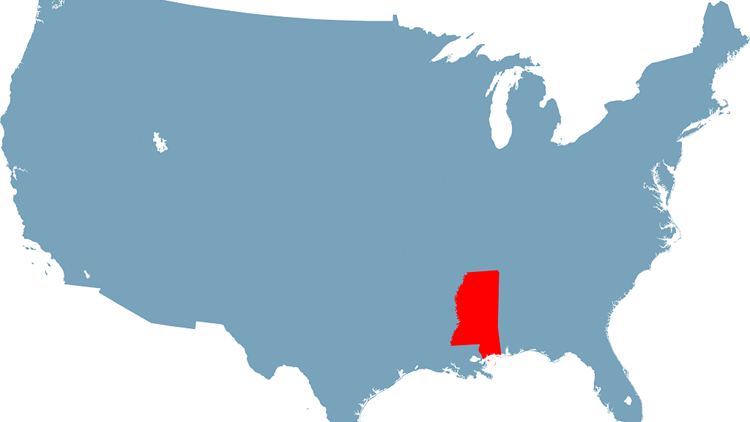by | Sep 12, 2021 | Tax Tips and News
The Internal Revenue Service announced that Mississippi will now receive tax relief in the wake of Hurricane Ida, delaying some filing and payment deadlines for affected taxpayers. The Magnolia State joins a list that currently includes Louisiana, New Jersey, and New York.
“The IRS is offering relief to any area designated by the Federal Emergency Management Agency (FEMA) as qualifying for individual or public assistance,” the IRS says. “Currently, individuals and households affected by Hurricane Ida that reside or have a business in all 82 counties and the Mississippi Choctaw Indian Reservation qualify for tax relief.”
What deadlines are extended by Hurricane Ida tax relief?
The Hurricane Ida tax relief generally extends filing and payment deadlines for individuals and businesses that were due on or after August 28, 2021, until November 1, 2021, including:
- TY 2021 quarterly estimated income tax payments due September 15, 2021
- TY 2020 calendar-year partnerships and S corporation extensions due September 15, 2021
- TY 2020 calendar-year corporation extensions due October 15, 2021
- TY 2020 individual return filing extensions due October 15, 2021
Taxpayers owing certain penalties are also benefitting from this relief: “Penalties on payroll and excise tax deposits due on or after August 28, 2021 and before September 13, will be abated as long as the deposits are made by September 13, 2021.”
However, tax payments due May 17, 2021, and quarterly payroll and excise tax returns due November 1, 2021, will not be extended.
How do taxpayers in Mississippi receive Hurricane Ida tax relief?
The Hurricane Ida tax relief is automatic for Mississippi taxpayers living in the federally declared disaster area, meaning affected taxpayers don’t have to do anything to receive it. That said, qualifying taxpayers might still receive late notices related to the extended deadlines. In those situations, the IRS says the taxpayers need to “call the number on the notice to have the penalty abated.”
But taxpayers don’t necessarily have to live in the disaster area to receive the tax relief.
“The IRS will work with any taxpayer who lives outside the disaster area but whose records necessary to meet a deadline occurring during the postponement period are located in the affected area,” the agency explains. “Taxpayers qualifying for relief who live outside the disaster area need to contact the IRS at 866-562-5227. This also includes workers assisting the relief activities who are affiliated with a recognized government or philanthropic organization.”
Are there any additional resources for Hurricane Ida victims?
The IRS provides links to two additional resources that can help victims of Hurricane Ida:
- Publication 547, Casualties, Disasters, and Thefts includes instructions for claiming uninsured or unreimbursed losses from the hurricane on the current- or prior-year tax return
- gov includes assistance forms, instructions for locating local resources, and other disaster recovery information
Follow the below link to read the full IRS press release.
Source: IR-2021-180
– Story provided by TaxingSubjects.com
by | Sep 11, 2021 | Tax Tips and News
Just as Hurricane Ida wreaked danger and misery to people from Louisiana to the Northeast, the Internal Revenue Service is expanding its tax relief for the storm’s victims.
This latest relief is targeted for taxpayers in New York and New Jersey.
“During this difficult time, the IRS stands ready to help victims of Hurricane Ida,” said IRS Commissioner Chuck Rettig. “We want people affected by this devastating hurricane focused on their safety and recovery for themselves and their families. To provide assistance now and in the weeks ahead, we have a variety of different types of relief available to help people and businesses affected by this disaster.”
The relief package follows the structure of the relief measures granted to Louisiana and the Gulf Coast earlier, with modified dates to compensate for the delay in Ida’s travel to the East Coast.
The relief package applies to taxpayers in any area that has been named by the Federal Emergency Management Agency (FEMA) as being qualified for individual or public assistance.
In New York, this currently includes Bronx, Kings, New York, Queens, Richmond and Westchester counties, and in New Jersey, it includes Bergen, Gloucester, Hunterdon, Middlesex, Passaic and Somerset counties. Other counties or localities may be added to the FEMA list. Any new locations are immediately eligible for the IRS relief once it joins the federal disaster declaration.
To check the locations currently eligible for relief, see the disaster relief page on the IRS website.
The relief delays deadlines
Like the Louisiana relief announced earlier, this newest package pushes the deadlines back to file and pay a number of varied taxes that would normally have deadlines of Sept. 1, 2021, or later.
The relief package pushes those file-and-pay deadlines back to Jan. 3, 2022. This includes taxpayers who already had an extension to file by Oct. 12; they now have until Jan. 3, 2022, to file their taxes.
It should be noted, however, that since the payment of taxes on those extended returns was due back in May—long before Ida came ashore—their payments aren’t covered by the relief package.
Also included in the expanded New York and New Jersey relief language are the quarterly estimated tax payments and excise tax returns that would otherwise be due in November.
Eligible entities for the relief measures include:
- Tax-exempt organizations, operating on a calendar-year basis, that had a valid extension due to run out on November 15, 2021
- Calendar-year partnerships and S corporations whose 2020 extensions run out on September 15, 2021
- Calendar-year corporations whose 2020 extensions run out on October 15, 2021
The IRS says it will abate any penalties on payroll and excise tax deposits that are normally due between September 1 and September 16, as long as the deposits are made no later than Sept. 16 of this year.
For a complete list of relief, payments, dates and other relief package information, see the IRS disaster relief page on IRS.gov.
No action is necessary to get the relief
The IRS relief measures are automatic; no action is needed by taxpayers to qualify. The agency uses a taxpayer’s address of record to match up with the list of federally declared disaster areas, enabling the various relief measures.
Taxpayers in the eligible disaster areas, however, who get IRS notices with original or extended filings should call the IRS—using the phone number included on the notice—to have their penalty abated.
Taxpayers, whether individuals or businesses, can claim their uninsured or unreimbursed losses either on the return for the year the loss occurred (such as the 2021 return that’s normally filed next year), or the return for the year prior to the loss (in this case, 2020).
Either way, taxpayers must remember to put the FEMA declaration number for their area on any return claiming a loss. These are:
- 4614 for New Jersey
- 4615 for New York
For more information, see Publication 547.
Check out DisasterAssistance.gov for details on FEMA and its response to Hurricane Ida.
Source: IR-2021-179
– Story provided by TaxingSubjects.com
by | Sep 10, 2021 | Tax Tips and News
When a major natural disaster strikes, it’s not uncommon for federal officials to pull out all the stops at their disposal to speed the wheels of recovery. That’s what’s happening now in Louisiana, in the wake of Hurricane Ida.
In Bayou Country, one of the big needs right now is fuel. Fuel for vehicles, fuel for generators and fuel for refrigeration.
Normally, dyed diesel fuel—earmarked only for farming and other specific purposes and untaxed as such—cannot be used legally in vehicles on the highways and roads. The diesel is dyed so that state inspectors can readily spot its use in over-the-highway vehicles. Taxed diesel carries no such dyes.
Because of the shortages brought on by Hurricane Ida, the Internal Revenue Service says it won’t penalize vendors or purchasers of dyed diesel fuel that is sold for highway use – but this relief only applies to a specific number of Louisiana parishes.
In Louisiana, parishes are equated with the county structures used in other states.
The Louisiana parishes getting diesel fuel relief are: Ascension, Assumption, East Baton Rouge, East Feliciana, Iberia, Iberville, Jefferson, Lafourche, Livingston, Orleans, Plaquemines, Pointe Coupee, St. Bernard, St. Charles, St. Helena, St. James, St. John the Baptist, St. Martin, St. Mary, St. Tammany, Tangipahoa, Terrebonne, Washington, West Baton Rouge and West Feliciana.
How do taxpayers get the dyed fuel penalty relief?
For these counties, the break on dyed diesel fuel runs from Aug. 29 of this year to Sept. 15. It’s available to any person who sells or uses dyed diesel fuel for highway use in any of the named parishes.
The relief, however, only applies if the operator of the highway vehicle—or the person selling the fuel—pays the 24.4 cents per gallon tax that normally applies to highway-use diesel.
In better circumstances, operators and vendors have to file semi-monthly reports to the IRS, detailing their diesel tax payments. The IRS is waiving those reports for operators and vendors who claim this tax relief.
Dyed diesel fuel isn’t taxed as a rule, because it’s sold for uses that are exempt from excise tax—such as farming, home heating use and to local governments for use in buses.
Despite this latest relief, other measures and regulations are still in force. The Internal Revenue Code penalty for using adulterated fuels that don’t meet EPA regulations, for example. As part of that, diesel with sulfur content higher than 15 parts-per-million cannot be used in highway vehicles.
The IRS says more relief measures may be on the way and the agency is monitoring the situation.
In the meantime, see IRS Publication 510, Excise Taxes, for the proper method of reporting and paying the tax applied to the dyed fuel.
Source: IRS grants dyed diesel fuel penalty relief in Louisiana due to Hurricane Ida
– Story provided by TaxingSubjects.com
by | Sep 9, 2021 | Tax Tips and News
This summer, the U.S. has been subjected to more than its share of natural disasters.
While disaster survivors may look at their tasks mainly as clearing debris and rebuilding structures, there’s another tool in the recovery tool belt that is just as important: actions that rebuild the taxpayer’s financial records.
Obtaining their tax records after a natural disaster can act as a foundation for their rebuilt lives. Taxpayers need records that will help them prove their loss of property and in turn, will help them recover the loss by supporting insurance claims or federal assistance.
We’ve got some simple steps to keep in mind when faced with a major disaster.
Step One: Get Tax Records
Tax records are handy in a number of ways, from proving the taxpayer’s legal address to providing vital data to qualify for federal assistance when a federal disaster area is declared.
For those who have internet access, free tax return transcripts can be obtained immediately using the Get Transcript tool on IRS.gov. If no internet service is available, taxpayers can call 800-908-9946 and follow the voice prompts to order transcripts.
Don’t forget about other financial statements, such as credit card statements or those from a bank. These may be available online, but taxpayers can also contact those institutions directly to get paper copies if needed.
Step Two: Get Property Records
The IRS has a number of suggestions on obtaining property records after a disaster. These become even more important when entire structures are swept away or destroyed:
- To get documents related to property, homeowners can contact the title company, escrow company or bank that handled the purchase of their home or other property.
- Those who made home improvements can get in touch with the contractors who did the work and ask for statements to verify the work and cost. They can also get written descriptions from friends and relatives who saw the house before and after any improvements.
- For inherited property, check court records for probate values. If a trust or estate existed, taxpayers can contact the attorney who handled the trust.
- When no other records are available, check the county assessor’s office for old records that might address the value of the property.
- Car owners can research the current fair-market value for most vehicles. Resources are available online and at most libraries, including Kelley’s Blue Book, the National Automobile Dealers Association and Edmunds.
More Resources
For the most up-to-date information and instructions from the IRS, tap into these resources, including Publication 547, Casualties, Disasters, and Thefts; Publication 584, Casualty, Disaster, and Theft Loss Workbook; Publication 584-B, Business Casualty, Disaster, and Theft Loss Workbook; Publication 976, Disaster Relief; or visit Small Business Administration or DisasterAssistance.gov online.
Source: IRS Tax Tip 2021-125
– Story provided by TaxingSubjects.com
by | Sep 3, 2021 | Tax Tips and News
The Internal Revenue Service has wasted no time in granting important tax relief to those most impacted by Hurricane Ida. The storm clouds that brought destruction to much of Louisiana and other parts of the Gulf Coast had barely cleared before the relief measures were announced.
These measures give hurricane victims in the federally declared disaster areas until Jan. 3, 2022, to file an array of individual and business tax returns, and to pay any tax due.
“During this difficult time, the IRS stands ready to help victims of Hurricane Ida,” said IRS Commissioner Chuck Rettig. “We want people affected by this devastating hurricane focused on their safety and recovery for themselves and their families. To provide assistance now and in the weeks ahead, we have a variety of different types of relief available to help people and businesses affected by this disaster.”
Currently, the entire state of Louisiana has been cleared for individual or public assistance by the Federal Emergency Management Agency (FEMA); but as other states and their counties are added to FEMA’s list of impacted locations, taxpayers in those areas will also be eligible for the IRS relief measures.
What are the details of the relief?
Generally, the IRS relief package takes various filing and payment deadlines for individuals and businesses that would have fallen on Aug. 26 or later, and pushes them back to Jan. 3, 2022.
This means taxpayers who had extensions to file their 2020 tax return by Oct. 15, 2021, now have until Jan. 3, 2022, to file their returns. However, it’s important to remember that since any payments of tax were due May 17—long before the date the relief package started—they’re not covered by the postponement.
Business filers also get a break with this relief package; quarterly estimated income tax payments normally due in September and quarterly payroll and excise tax returns usually filed in November have been rolled back to the Jan. 3, 2022 deadline for qualified filers.
This postponement also applies to tax-exempt groups that operate on a calendar-year basis with extensions that carry a Nov.15 deadline.
Businesses with extensions—including those calendar-year firms with 2020 extensions ending October 15—also get the additional time to file.
The IRS says any businesses with penalties on payroll and excise tax deposits that were due on or after August 26 and before September 10 will have their penalties abated if the deposits are made by September 10.
For more information on other returns, payments or actions qualifying for the relief, see the IRS disaster relief page on IRS.gov.
The application is automatic
There’s no need for taxpayers to contact the IRS to apply for the relief terms; the IRS automatically uses a taxpayer’s address of record to indicate whether their address is on the list of eligible states and localities.
However, if a taxpayer in the relief area gets a notice for filing late or paying a penalty late, the taxpayer should call the IRS so the penalty can be abated.
Taxpayers who qualify for the IRS relief measures but live outside the federal disaster area should call the IRS at 866.562.5227.
Relief workers in the disaster area who are part of a recognized government or philanthropic organization assisting in the recovery process also need to call the agency to obtain IRS relief.
The IRS also says it will work with taxpayers who live outside the specified disaster area, but whose records needed to meet a regular IRS deadline are located inside the affected area.
Taxpayers in a federally declared disaster area (individuals and businesses alike) have a choice when it comes to claiming their losses on a tax return. They can either claim the loss on the return for the year the loss occurred—in this case, the 2021 return normally filed next year—or on the return for the prior year.
In either case, filers should write the FEMA disaster declaration number for Hurricane Ida in Louisiana on returns that claim a loss: 4611. Get more details in Publication 547.
For more information on disaster recovery, including the coordinated response to Hurricane Ida, visit DisasterAssistance.gov.
Source: IR-2021-175
– Story provided by TaxingSubjects.com





